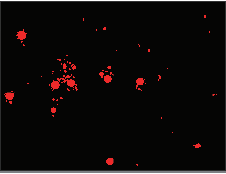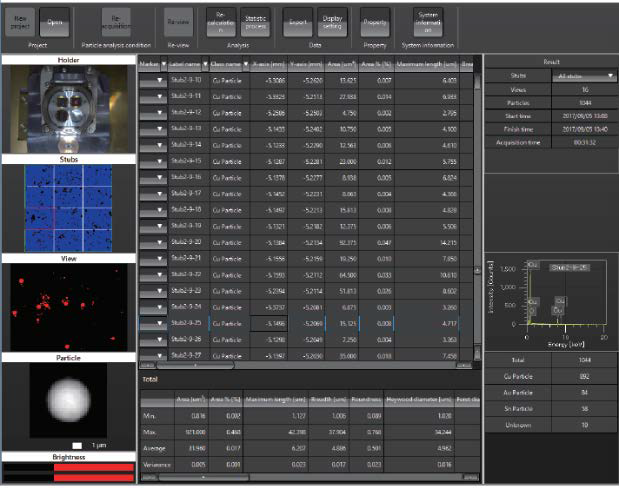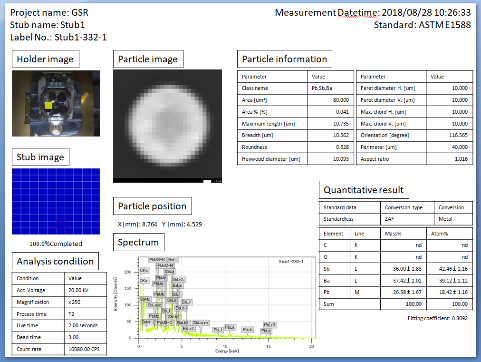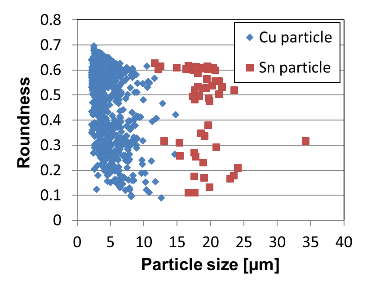JEOL’s Particle Analysis Software 3 (PA3) improves the potential of analytical SEM by automating the detection, EDS analysis, and classification of particles, grains, and additional elements in the samples. Completely incorporated with SEM-EDS systems, PA3 boosts throughput and efficiency by delivering rapid, unattended measurements throughout great sections of a sample or numerous samples.

Image Credit: JEOL USA, Inc.
From quality management, manufacturing, product development, and research, PA3 augments current inspection capacities at the micron and sub-micron level. Areas that profit from PA3 are: inclusions in automotive sanitation, additive manufacturing, metal alloys, pharmaceutical products, identification of external substances, forensics (GSR) and electronics, etc.

Image Credit: JEOL USA, Inc.
For regular analyses, recipes that store certain configurations for particle detection and user-defined chemical classifications can be established. Recipes streamline the setup and make it quick and simple for even inexperienced users. Additional libraries are accessible that comply with a range of industry standards, including:
- Metal Feature Analysis (MFA) Library. For the evaluation of inclusions in steel with categorization and reporting that complies with ISO 4967.
- Gun Shot Residue (GSR) Library with categorization and reporting that complies with ASTM E1588
- Road Vehicle Cleanliness (RVCLB) Library. For particle examination from automotive parts with categorization and reporting that complies with ISO 16232.

Image Credit: JEOL USA, Inc.
Advanced functions are integrated for enhancing particle characterization routines and comprise of: probe tracking, utilizing shape data to comprise of/exclude particles from EDS analyses, automatic gun axis alignment to regulate brightness alterations, and preventing the run once a particular number of particles are exposed.

Image Credit: JEOL USA, Inc.
Particle morphology and element structure outcomes can be managed and observed in many ways (histogram, scatter plots, Microsoft Excel, Word, PowerPoint, PDF) for reports flexible to meet individual needs. Offline software is accessible to process data on an additional PC.

This information has been sourced, reviewed and adapted from materials provided by JEOL USA, Inc.
For more information on this source, please visit JEOL USA, Inc.